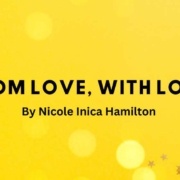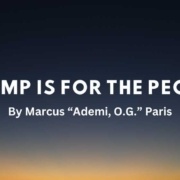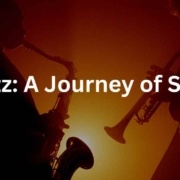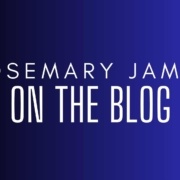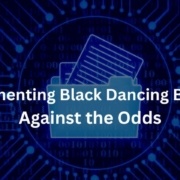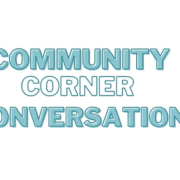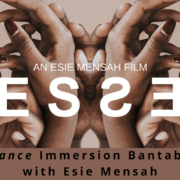By Raoul Pillay

Raoul Pillay
Through Jazz, I found the gift of self. Growing up as coloured in Zimbabwe but black in Canada, it felt like two very different stories. I had to relearn mine. Who is Raoul?!
I spent a lot of my teenage years isolated, going from one form to another. It felt like a never-ending journey and the one thing I was chasing, could not be found. I got so occupied in this sense of being, wanting to prove a point to myself and others that I kept moving further and further away from who I truly was. Not to long after I lost my father to mental health. It felt like my world was over but from then on, I knew I had to make my dad proud.
I was offered a position to be in a company called Holla Jazz run by the artistic director Natasha Powell. I remember vividly trying to understand the material. It felt like I could not dance or count. I would always go to the back when we did the form across the floor and would often wear suits, as a direct reference to the people I studied. Certain characteristics within this vernacular were harder to embody and others to compare, to the other forms I studied. Having a powerful leader such as Natasha Powell, made the process easier to bare. She would lead the lessons with stories, and pictures and her knowledge and dedication to the form was downright inspiring. We went on to win a Dora award for best ensemble and we just knew, we did us. We felt in purpose and had a duty to bring light to the true form of Jazz. I remember shortly after doing a show in front of other Jazz dancers. I had imagined similar embodiment and cultural representation. It was not what I expected. A woman approached us shortly after. Her eyes flared up and immediately gave us a hug. With offerings of candy, she whispered to us “Thank you, finally some more black people”. I remember telling myself from that day on, I had a bigger responsibility.
To understand my purpose I had to retrace the stories of the elders. Preaching social environments that birthed these forms. I spent a few years watching and imitating. Being a student to the environment. I had finally fell in love with something. It felt so out of body that the phrase “Catching the ghost” made sense. I spent a lot of time studying the roots and the more spiritual I became, the more curious I did as well. Seeing that Jazz is the root form I thought why separate the forms. It really defined my style and birthed my name “Jiggyman”. The free flow of house, the spirit of Jazz and the embodiment of my ancestors. I found me and my purpose. The kid who was once lost had found his life again. It felt like I could see the music as I moved. Almost like clay with its ability to be formless and adaptable. I began to theorize things and the more I learned, the more I unlearned. I then attended symposiums with cultural leaders and lectures affirming cultural memories and the expressive form that is Jazz, including the dance Immersion Legacy Series Jazz Dance Symposium. Moncell once said “We are spiritual beings, having a human experience”
I also recently attended Vernacular Spectacular. An event filled with jazz and its root connections. Lessons run by lecturers who understand the historical lineage from past to present. I met someone I really look up to. Chester Whitmore! He understood and lived life in such a youthful way and we got along to the point, that on the last day he didn’t want me to leave his side. I cried that day. It was never about dance but more so the cultural memories. He portrayed a father figure, an embodiment of being and a representation of who I was. I now walk with my head high. In full purpose speaking the language of Jazz and affirming my presence within it.
Jazz is not just what you watch or try to study. It is a way of being. These are dancers that were oppressed, so I will not be taking this form lightly. As they say “When you learn its name, you learn its power.” My name is Jiggyman and I live the spirit of Jazz in many forms. Through lived experiences I am but an idea that remains formless and in full spirit. Here to reclaim the power of the people and to speak the truth.
Jiggyman

Photo by McKenzie James
I am an artist with over thirty years of experience as a dancer, educator, rehearsal director and entrepreneur. Reflecting on my journey into dance has brought up memories of teachers and mentors who have supported my artistic development, whether it was in the studio setting or attaining my degrees in dance at York University.
When I was twelve, I attended a performance at the O’Keefe Centre now known as the Meridian Hall by the Alvin Ailey American Dance Theatre. This all-Black dance company was inspiring, graceful, elegant, athletic, and technically skilled. My goal was to eventually train in New York, but my path took a different direction.
Magda Lakihazi was my first Cecchetti ballet instructor. She would often give me private lessons throughout my teenage years. She had a wonderful eye for detail, was meticulous, kind, and encouraging. Throughout high school I had classes in ballet and jazz. I was eventually introduced to Len Gibson who had a dance studio. His classes were high energy and pushed my technique and artistry. I had the privilege of performing with the Len Gibson Ensemble in the early 80s. I did not stay long because I wanted to pursue a degree in dance.
I was enrolled at Ryerson Polytechnical Institute (TMU) in the dance program from 1982-1983. I became increasingly unsatisfied with the curriculum and decided to leave after a year of training. Fortunately for me, Billyann Balay who was teaching modern dance, noticed my lack of enthusiasm for the program. She suggested that I audition for The School of Toronto Dance Theatre (STDT) where she was the principal.
From 1983-1986 I trained in the Martha Graham Technique with the founders of Toronto Dance Theatre (TDT) Patricia Beatty, David Earle, Peter Randazzo and various teachers over the years. I fell in love with this rich, foundational, and complex modern art form which I continue to teach at Toronto Metropolitan University, STDT and Performing Dance Arts.
My passion for teaching started in my formative years. I would rush home from school and share with my siblings what I had learned that day. This imparting of knowledge continued when I was a gymnastic coach for several years and taught dance classes for the club.
Since 1987, I have taught in the Pre-Professional Training Program at STDT, and I was the Training and Performing Associate from 2009-2021 under the expert leadership of Patricia Fraser. I have taught master classes locally, nationally and internationally to novice, pre and professional dancers.
As a dancer, I performed choreographies by the founders of Toronto Dance Theatre and then resident choreographer Christopher House from 1986-1992. In the fall of ‘92 I was offered the position of Rehearsal Director.
For twenty-six seasons I worked alongside the visionary and creative genius of artistic director Christopher House (1994-2020). Most of my skills as rehearsal director were learned during this period. It is an interesting job that has included remounting choreography, coaching, directing rehearsals, new creations, teaching, scheduling, touring, and collaborations with artistic, administrative, and production teams. I continue to be active in this role with the innovative and forward-thinking artistic director, Andrew Tay.
I am proud of my academic achievements. From 2000-2006 I acquired a BA and MA in Dance at York University, while continuing to work full time for TDT and part-time with STDT. I was thrilled by this endeavor, because it allowed me to experience academia and to be stimulated by professors such as, Mary Jane Warner and Selma Odom.
My teachers and mentors have inspired, nurtured, educated, and supported my journey in dance. From their examples, it is my desire to continue the work of sharing information, imparting knowledge and encouraging future generations of dancers through my experiences and artistic endeavors.
My initiatives outside of teaching and rehearsal directing have led to the audio series Recconecting with Black dancers from the 80’s and Early 90’s (2021) and collaboration with Mary Jane Warner on the film tribute Celebrating Patricia Beatty: Artist, Choreographer, Teacher (2021). I have enjoyed these different projects because they have kept me engaged with the broader dance community. My hope is that they are informative and offer a glimpse into the lives of the people associated with TDT.
On January 27, 2023, I was honoured with The Charles Augins Inspirational Artist Award. This is the first award that I have ever received in acknowledgement of my work in the field of dance. I am filled with gratitude because rarely are artists in my profession recognized for their contributions to dance.
To be appreciated and celebrated by the International Association of Blacks in Dance organization, dance Immersion, family, and colleagues is meaningful because it reflects all the hard work, dedication, commitment, time and energy that I have devoted to my craft.

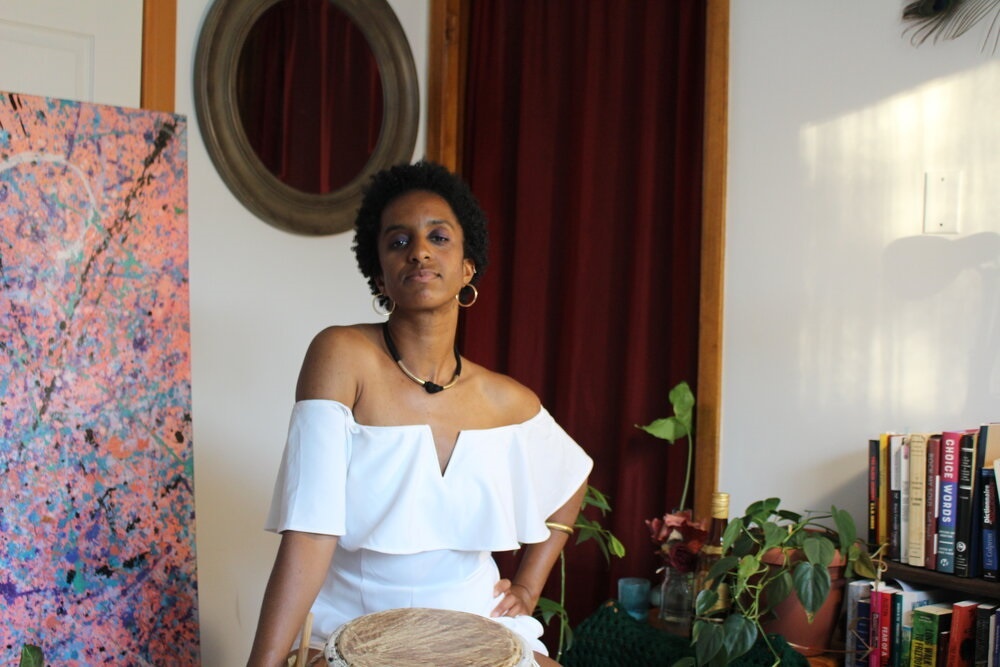
Documenting Black Dancing Bodies Against the Odds
By Emilie “Zila” Jabouin
When people ask me what I do, I say I am a dance artist and a researcher. The two actually go very intimately hand-in-hand. I research to tell forgotten stories of black women and of black history particularly in the Americas as a whole, and I dance to share those stories intimately and process them in my body for others to be present to them.
In 2022, I had the privilege to work with Dr. Seika Boye on her dance history exhibition, “It’s About Time: Dancing Black in Canada, 1900-1970, and Now” that had opened in Vancouver, BC on October 12, 2022 at the Audain Gallery as a critical engagement with historical representations of Black people in performance. In preparation for the opening of the exhibit as part of the International Association of Blacks in Dance (IABD) held in from January 25-29, 2023, I kept a different intention and audience in mind. This showing was going to be for an international audience, or at least an American one that for the most part knew close to nothing about Canada, and was maybe even hesitant—and secretly doubtful—about whether Black Canada was relevant at all.
Regardless, working on “It’s About Time”, documenting Black dancers, their diasporic realities, their work within and outside the dance space was so fulfilling because I saw myself, my life, my passions and work reflected and contextualized in their stories.
Five artists were highlighted in this exhibit, including: Paul Pettiford, Dindi Lidge, Jean Sheen, Kevin Pugh, and Zab Maboungou; three of which are still alive—Zab Maboungou, Kevin Pugh, and Jean Sheen—and have been active in creating ground-breaking and foundational spaces for all dancers, while maintaining the rigorousness of dance as an artform to thrive. There is a tinge of activism and commitment to future generations that all of these dancers, choreographers and advocates exhibited. This was noticeable in the character roles they took on during their career; their decision to teach; their promotion of dance education and scholarship here and abroad; the opening of dance schools; as well as their development of foundational techniques. All have made great contributions to the landscape of dance and for the future of Black dance in Canada specifically in ways that are difficult to grasp—and that are made more palpable through this historical and timely exhibition that continues to give.
A point I would like to share are some of the difficulties of let’s say, not finding dancing images of Jean Sheen, one of the artists highlighted in the exhibition “It’s About Time”. This could be a result of how often dancers are overlooked (even in dance spaces) as being the glue, the in-between, the bones that make choreographic work possible! There are also many false beliefs that we, as dancers, are just there to present the work…nothing else. These misconceptions greatly underestimate for example the more mature dancers in their 30s, 40s and older all together who have a very different relationship with their bodies, than younger dancers who maybe have less or no injuries and who can twist their bodies in ways that may not be as easily possible for some of us anymore. Either way, the dance really cannot be divorced from the body, from the stories, from the weight of the experiences, and from the ways in which we individually express ourselves…Another point that troubles me, is the shame and discouragement of knowing that precious information about Paul Pettiford’s life and commitments to dance, to Black art and to community in “Blackhurst”—the historically Black Bathurst and Bloor neighbourhood of downtown Toronto, are fizzling away as we presently speak in the Toronto Library archives. Their deterioration is caused by underfunding. Point blank. The underfunded nature of archival practices in turn underprioritizes the documentation of Black communities in Canada—which continues to feed the idea that we are simply not here.
Although immigration laws and policies have for long dictated how Black dancers move through Canada and in Canada, and I am proud to say that regardless of the odds, we continue to dance, create, advocate for our communities and our unique artistic expressions, then and now.
From October 21-23, 2022, dance Immersion hosted the Legacy Series: Jazz Dance Symposium. On the first night we watched the extraordinary documentary entitled “Everything Remains Raw: A Historical Perspective on Hip Hop Dance” by E. Moncell Durden. The documentary was incredible and deeply informative on the different types of dances from African American and Latinx people that changed the dance landscape of the United States. The weekend program inspired many conversations including one among some colleagues led by Nicole Inica Hamilton of Turn Out Radio, about the room’s thoughts on the history of our dances, and the complexities of codification, regulation and syllabus notations.
Even the way in which we learn, consume and engage in dance keeps evolving. We have moved away from learning from our elders in the villages, our peers on the street corners, friends and strangers at the clubs, basement parties, sessions at the community centers, family bbqs. For many, these have been replaced by dance studio lessons and/or learning through social media platforms to engage and learn movement. We often heavily rely on dance studios or social media to engage and learn movement.
Over time certain dance styles have changed or disappeared into the abyss. When we first started this community conversation corner, we talked about the importance of preserving our cultures and our customs through dance, which inspired me to think about the concept of codification.
Could codification be the answer to keeping our dance styles alive in their purest forms?
Codification is described as the process of naming certain movements or steps and setting the physical technique of the latter (Keyes, 2018).
My understanding of this definition is that the dance form would stay in its original form, remain constant, and also that artists engaging in the dance form would know the names of the movements, their meaning and its history.
Although, in theory, this seems wonderful, I cannot help but wonder if this process is feasible or advisable when we refer to street or traditional styles.
Key questions include:
If a style derives from an individual’s self-expression, lifestyle, cultural or spiritual practice, can we codify it?
If we were to begin to codify certain dance forms, how would we go about ensuring their authenticity?
How do we ensure the individual still has the freedom to explore their natural body in movement?
How do we begin to codify a dance that has been modified throughout the years?
Can we codify some African Diasporic dances but not all?
Finally, what would be the process to begin coding?
In our upcoming November-December 2022 Instagram Live series – in partnership with Turn Out Radio, we will work with artists to explore these questions.
And please submit your own thoughts in the comments below. If you have thoughts that you would rather not share publicly, please email me at info@danceimmersion.ca.
~ Zahra
What is art?
Art to me is an escape from reality. A way to express our thoughts, feelings, emotions and experiences.
Throughout my artistic journey, I have encountered many situations where people were engaged in conversations on the differences between the qualifications of a trained/ technical dancer versus a self-taught dancer. The debate on whether one is more equipped to succeed in their professional artistic career than the other. This led me to question myself on what determines the longevity and accomplishments in an artistic journey. Also, at the end of the day, does your academia or life experiences matter in evaluating or appreciating your talent and your gift?
A technically trained dancer or professional is defined as one who has received formal training from an educational institution, whereas a self-taught dancer is one who learned through discovery and learning from others within the dance community. Although in theory, these two seem clear cut, in reality the lines are blurred, or at times non-existent. Every dancer at one point or another will go through some form of formal training whether it’s through classes, and/or workshops, residencies, or mentorship programs. Just like how every dancer at some point, through discovery, will use their life experiences to develop their own artistic voice that is not taught in an educational institution.
In saying that, I am curious if we can or will ever reach a point where we can debunk the idea of technical segregation. Dance is not a singular entity, there are hundreds if not thousands of different genres across the globe so who determines which “technique” supersedes another?
Stephen Wang writes in his book, Triple Crown Leadership, “No matter what job you have in life, 5 % of your success will be determined by your academic credentials, 15% by your professional experiences and 80% by your communication skills.”
Do you agree? Do you believe that technical training, life experiences, or a combination of both will help you be successful in your artistic journey?
What are your thoughts? Please comment on this blog if you would like to participate and share your experiences in this community discussion. If you have thoughts that you would rather not share publicly, please email me at info@danceimmersion.ca.
Yours truly,
Zahra
A continuation of dance Immersion’s Online Bantaba & Check-In with Esie Mensah on her film, Tessel.
In this video, Esie answers questions from the audience that we did not have time for at the Bantaba event.
Hello,
My name is Zahra Badua and I am the administrative assistant here at dance Immersion – welcome to my blog. Over the next few weeks, I will be hosting a community corner where I will be discussing various topics that affect the African Diaspora. In addition, I will be speaking with prominent people within our community to get their perspectives on various topics. In this first blog, I intend on starting a conversation about the upkeep of African and Caribbean traditions, primarily our traditional/folk songs and dances.
Let me begin by introducing myself. I am a Ghanaian dancer/ teacher/ choreographer originally from Montreal, Quebec. My passion for dance started at a very young age as a means to learn and understand my African heritage. I moved to Toronto to pursue a career in criminal justice until I realised that dance was my true calling.
My artistic journey has brought me to a place where I am fascinated with the art of storytelling and dance. In the African culture, song and dance are the ways our history and culture are passed down from one generation to another. Our elders are the ones that teach us, they are the ones that uphold and keep our traditions in their purest form. Their knowledge and expertise are passed down orally.
Lately, I find myself questioning if our rich traditions will become extinct, since they are taught orally. What happens when an elder dies and we did not get the chance to gather the information before they transitioned?
There is an African proverb that says:
“When an Elder passes on, it is like losing a library”
How do we trace back our rich history when the elders are no longer present?
I am curious to know what your thoughts are. Please comment on this blog if you would like to participate in this community discussion.
If you have thoughts that you would rather not share publicly, please email me at info@danceimmersion.ca.
Yours truly,
Zahra Badua
OFFICE HOURS
Monday to Friday: 10 AM – 5 PM
We are best reached via email:
info @ danceimmersion.ca
CONTACT
DONATE
Every dollar of a donation made to dance Immersion directly supports artists for presentations, workshops, and residencies.

